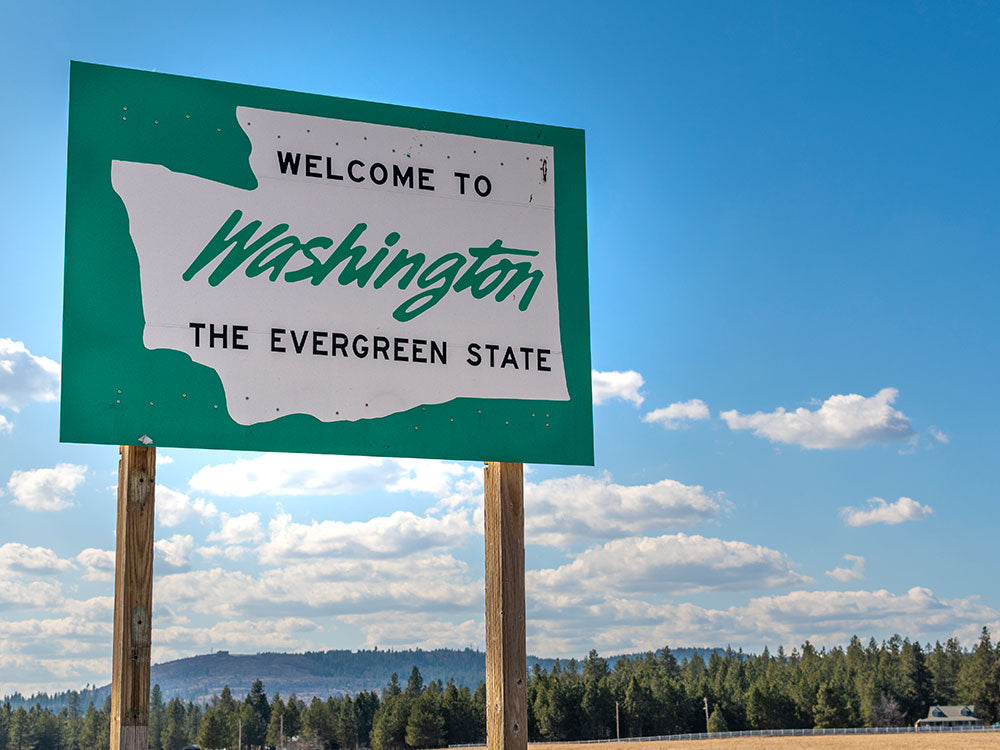Table of Content
1. Introduction
Having a long history of struggles for freedom, what better place to enjoy the freedom of riding a motorcycle than in the state of Texas? Also known as “The Lone Star State,” Texas is an ideal place for you to try out your riding skills thanks to the long and open roads that cut through the vast landscape.
However, there is a limit to how much you can enjoy yourself while spending time on your motorcycle. Texas is not always empty highways and scenic byways where you can safely apply a little extra throttle. More often than not, you will have to get used to sharing the road with others.
Sometimes the biggest challenges are not even the ones on the road. The most daunting hurdle many Texas riders have to face is just getting the qualifications needed to operate a motorcycle in the first place.
2. Texas Motorcycle Insurance
You cannot take a motorcycle out for a trip until you acquire Texas motorcycle insurance . Every motorcyclist must be bearing a record indicating they can be financially responsible if they were a party present at an accident. In Texas, you are only required to have liability insurance coverage.
The minimum liability costs that Texas motorcycle insurance has to cover include the following:
You must provide $30,000 per injured or deceased person
You must provide $60,000 for multiple injured or deceased people per accident
You must provide $25,000 for property damage per accident
If you need help remembering this information, remember to use the term 30/60/25 coverage.
Aside from the required motorcycle insurance, you may benefit from including the following nonmandatory coverage:
Collision coverage: Will help pay for damages that your motorcycle sustained during an accident.
Comprehensive coverage: This helps with repairs to your motorcycle and replacing lost items due to any issues unrelated to accidents. These include hail, fire, flood, vandalism, or theft.
Uninsured & underinsured coverage: Helps you to file a claim against a driver who either does not own insurance or whose insurance cannot cover all of the accident-related costs.
If you are caught without having any Texas motorcycle insurance, you will be fined $175 to $350 for your first offense.
If you are caught without motorcycle insurance multiple times, you can be fined $350 to $1,000 going forward.
Plus, local police have the authority to suspend your Texas motorcycle license and registration for two years. You can only get them back after providing documentation of owning motorcycle insurance.
Your motorcycle can also be impounded for up to three months unless a court order is given for release and you can provide documentation of owning motorcycle insurance.
If you wish to learn more about Texas motorcycle insurance, try visiting the Texas Department of Insurance .
3. Texas Motorcycle Helmet Laws
According to Texas Transportation Code § 661.003, riders and passengers under 21 are mandated to strap on a motorcycle helmet.
Motorcyclists who are ages 21 or older do not have to wear a motorcycle helmet, provided they can show proof of completing a motorcycle operator training and safety course or owning a health insurance plan.
Specifically, you need to complete a Motorcycle Operating Training Course provided by the Department of Motor Vehicles. Also, your coverage should at least be $10,000 in terms of medical insurance.
A motorcycle helmet approved by the Department of Transportation and the National Highway Traffic Safety Administration should have the following features:
Inner lining made of one inch of polystyrene foam
A chinstrap
Must weigh at least or more than three pounds
Protrusions on the exterior should be no more than two-thirds of an inch
Have the DOT sticker or logo plastered on the exterior
If you wish to know more about Texas motorcycle helmet laws, you may find what you are looking for at the Texas Department of Transportation.
4. Texas Motorcycle License Laws
4.1 Types of Texas Motorcycle Licenses for Minors:
To be allowed to operate a motorcycle in Texas, you either have to own a Class C learner license, Class C provisional license, or a Class M license. The type of motorcycle license you have tends to reflect the level of experience you have operating two-wheeled motor vehicles.
Depending on which motorcycle license you have, there may be limitations regarding what you are allowed to do. Listed here is a comparison between each kind of motorcycle license legally recognized in Texas:
| Details | Class C Learner License | Class C Provisional License | Class M License |
|---|---|---|---|
| Mandatory for applicants below the age of 18 | ✔️ | ✔️ | ❌ |
| Completed driver education course classes | ✔️ | ✔️ | ✔️ |
| Completed behind-the-wheel portion of driver education | ❌ | ✔️ | ✔️ |
| Completed Impact Texas Teen Driver Program | ❌ | ✔️ | ✔️ |
| Provide evidence of current school enrollment | ✔️ | ❌ | ❌ |
| Requires holding for six months | ✔️ | ✔️ | ❌ |
| Expires when you turn 18 | ✔️ | ✔️ | ❌ |
| Adds extra days of completion should your license be suspended | ✔️ | ❌ | ❌ |
| Must be supervised by a 21-year-old or older with a valid motorcycle license | ✔️ | ✔️ | ❌ |
| Cannot carry a passenger except licensed supervisor | ✔️ | ✔️ | ❌ |
| Cannot travel between 12 a.m. to 5 a.m. | ❌ | ✔️ | ❌ |
| Cannot use wireless communication devices except during an emergency | ✔️ | ✔️ | ❌ |
| Allows you to operate a motorcycle | ✔️ | ✔️ | ✔️ |
If you wish to learn more about the Texas motorcycle licenses available to minors, visit the page focused on the Graduated Driver License Program provided by the Texas Department of Public Safety.
4.2 Requirements to Apply for Texas Motorcycle License:
| Requirements | Applicants Ages 15 to 17 | Applicants Ages 18 to 20 | Applicant Ages 21 and Older |
|---|---|---|---|
| Held a learner license | ✔️ | ❌ | ❌ |
| Held a provisional license | ✔️ | ❌ | ❌ |
| Present Parent Taught Driver Education form (PTDE-964) | ✔️ | ❌ | ❌ |
| Present a motorcycle safety course completion certificate (MSB-8 or MSB-8R) | ✔️ | ✔️ | ✔️ |
| Take a driver education course (DE-964) | ✔️ | ✔️ | ✔️ |
| Submit a Verification of Enrollment and Attendance (VOE) | ✔️ | ❌ | ❌ |
| Provide proof of Texas motorcycle insurance | ✔️ | ✔️ | ✔️ |
| Provide evidence of Texas vehicle registration | ✔️ | ✔️ | ✔️ |
| Fill out appropriate driver’s license application | ✔️ | ✔️ | ✔️ |
| Include an authorized parent signature | ✔️ | ❌ | ❌ |
| Show proof of your identity | ✔️ | ✔️ | ✔️ |
| Have your social security number | ✔️ | ✔️ | ✔️ |
| Pay required fees | ✔️ | ✔️ | ✔️ |
| Provide thumbprints | ✔️ | ✔️ | ✔️ |
| Have your picture taken | ✔️ | ✔️ | ✔️ |
| Take vision exam | ✔️ | ✔️ | ✔️ |
| Pass the written test | ✔️ | ✔️ | ✔️ |
| Pass the road test | ✔️ | ✔️ | ✔️ |
| Provide proof of U.S. citizenship | ✔️ | ✔️ | ✔️ |
| Provide proof of residency in Texas | ✔️ | ✔️ | ✔️ |
If you are the age of 14, you are allowed to take driver education and safety courses. However, you have to wait until you are 15 to attempt to earn your learner license.
Anyone under 18 years old holding a Class M license will have to comply with restriction codes regarding how and when they are allowed to ride their vehicle during their first year.
If you are 15 years old, you are allowed to apply for a Class M license. However, you are restricted to operating a motorcycle with 250 cubic centimeter piston replacement.
These restrictions can be removed by contacting the driver’s license office upon turning the age of 16.
A Texas motorcycle license can cost from $8 to $33 depending on the type.
If you want to review the information on how to apply for a Texas motorcycle license, visit the page on Motorcycle License provided by the Texas Department of Public Safety.
4.3 Texas Motorcycle License Test:
When you are ready to take your motorcycle license test, schedule an appointment with the Driver License Services of the Texas Department of Public Safety. You can schedule your appointment at least 180 days beforehand. Give yourself as much time as possible to study the Texas motorcycle safety laws and practice on your motorcycle a few more times.
The information you will need to know for the written portion of the motorcycle license test can be found in the Motorcycle Operator Training Manual provided by the Texas Department of Licensing & Regulation.
If you are a minor, try to convince a licensed supervisor to go out with you for as many practice rides as possible before your appointment. In general, applicants should try to get a good handle on basic motorcycle maneuvers.
On the day of your motorcycle license test, you are required to bring a motorcycle, another vehicle, and a licensed driver to transport you to the location. Your motorcycle will be subject to an inspection to make sure all of its safety features are working properly.
The written portion of the Texas motorcycle license test consists of 20 multiple-choice questions. You need to get at least 16 correct answers to pass the test. The questions will always be randomly generated if you find yourself attempting them multiple times.
The driving portion of the Texas motorcycle license test will test your riding skills including changing lanes using your hands to signal , merging with traffic, complying with traffic laws, and moving at or below the posted speed limit .
While passing the motorcycle license test is mandatory for applicants below the age of 18, it can be waived if you are one of the following:
An applicant who is 18 years old or older who has completed a motorcycle safety course and has a valid, unrestricted Texas Class A, B, or C license
An applicant who is 18 years old or older who is transferring a valid, unrestricted license from another state or Canada
An applicant getting a motorcycle learner license
To help you plan for taking motorcycle license tests in the future, visit this page on how to Schedule your Driving Test Appointment provided by the Texas Department of Public Safety.
5. Texas Motorcycle Passenger Laws
Before you can take on a passenger, you must first install a fixed passenger seat, footholds, and handholds. A motorcycle cannot fit more than two people at a time and it is illegal to try to squeeze into a single seat.
You are only allowed to carry a passenger over the age of five. However, if you plan to carry a child, it is best to take one who is at least eight years old or is at least 4’9” tall. Children in this group can reach the footholds with little to no difficulty.
Any passengers that are between the ages of five and 21 are required to wear an approved motorcycle helmet. If a passenger is over the age of 21, he/she can opt to not wear a motorcycle helmet so long as they have similar or the same documentation as you do.
A passenger is treated the same as an active motorcycle rider so they are also subject to Texas motorcycle traffic and safety laws.
6. Texas Motorcycle Lane Splitting Laws
According to Texas Transportation Code § 545.060., all vehicles are required to travel within a single lane and can only switch between lanes when it is safe to do so. There are no laws stating it is legal to travel along the dotted lines that make up the borders of the lanes. Therefore, lane splitting is considered an illegal practice for motorcyclists.
If you are pulled over by local law enforcement for lane splitting, you may be given a fine of at least $175.
If an accident occurs while you are attempting lane splitting, you may be found at fault and face charges for negligent or reckless driving.
7. Texas Motorcycle Safety Features
Periodically, you will have to inspect the state of your motorcycle to make sure that all of its equipment is in working order. You will have to look over the safety features that aid in visibility, maneuverability, etc. If you find any issues, you must replace or repair any failing components during maintenance . You risk getting pulled over by local law enforcement should there be signs of problems with your motorcycle’s functionality.
Horn
Rearview mirrors
Steering system
Brake system
Wheel assembly
Exhaust system
A tail lamp
A stop lamp
A license plate lamp
A rear red reflector
A headlamp
Your motorcycle’s vehicle identification number
To find the checklist that will help you keep track of the motorcycle safety features, visit the Texas Department of Public Safety .
8. Texas Motorcycle Exhaust Noise Laws
Even though other states have motorcycle exhaust noise laws, Texas is unique in this case simply because it does not have any.
Of course motorcycles in Texas are still required to have a muffler to lower the volume of the engine and the amount of smoke that pours out. You can still be held accountable if your exhaust produces an unnecessarily loud noise.
However, during inspections, your motorcycle’s exhaust system does not have to be checked for its volume control.
Also, you will only have to apply adjustments to your muffler depending on the decibel limit and noise regulations outlined by the Texas city or county you are traveling through.
If you decide to modify your muffler, you have to make sure that the new one has a similar look and functions just like the original design. Make sure there are no holes or leakage.
9. Takeaway
While Texas can be more liberal in its motorcycle laws and licensing policies, you still have to make sure to keep up to date with the latest versions to keep yourself safe and ensure you do not get into any trouble with the law.
You should make sure that you have motorcycle liability insurance coverage in case unexpected events occur that threaten your health and your motorcycle’s integrity.
For children, minors, and young adults, helmets are a necessity that safeguards their heads as they experience what it is like to travel on a motorcycle. Even if they are not the ones at the handles, safety precautions have to be considered just like any other motorcyclist.
The procedure for getting a Texas motorcycle license can differ depending on the age of the applicant. It can be a long yet educational process if you are not old enough yet to operate a motorcycle alone. It can be a standard routine if you are old enough to grasp the fundamentals of riding a motorcycle. Either way, everyone needs proof that they can handle the responsibility of using a two-wheeled vehicle.
When you finally make it onto the highways, you should always be mindful of your motorcycle’s functions and appropriate riding behavior. If even a single component is failing at doing its job, you present a danger to yourself and those around you. If you try an illegal maneuver like lane splitting to get ahead of other drivers, you may pay for it financially and physically.
While motorcycle exhaust noise is not given much attention in Texas, you should still use your best judgment when it comes to this aspect of your vehicle. Only make modifications to your muffler if you deem it necessary and try to be considerate of the people within hearing distance of your ride.













Leave a comment
All comments are moderated before being published.
This site is protected by hCaptcha and the hCaptcha Privacy Policy and Terms of Service apply.